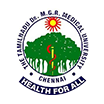At the Ortho-One Orthopaedic Speciality Centre in Coimbatore, Dr.M.Shyam Sundar treats patients with shoulder, knee, and elbow injuries. He discusses rotator cuff tears and the consequences of disregarding your symptoms.
Understanding the anatomy of the shoulder joint and the rotator cuff’s function in its movement is necessary to comprehend rotator cuff tears. A ball and socket joint, the shoulder joint is also referred to as the glenohumeral joint. A group of muscles that make up a ligament cover the joint’s ball. This ligament’s primary job is to allow the shoulder joints to move, which allows us to lift our arms, move them to the side, rotate them above our heads, etc.
Since the rotator cuff is made up of several muscles, injuries are possible. This ligament tears with age due to wear and tear, but it can also tear with trauma or injury in younger people. If this ligament tears for any reason, it causes pain and makes it difficult to lift the arm. “At Ortho-One, we frequently see patients who have been experiencing shoulder pain for a considerable amount of time,” says Dr. Shyam. The majority of patients have difficulty lifting their arms, pain after sleeping on the painful side, or sharp, intense pain in a specific location when attempting to move an arm in a certain direction.
Dr. Shyam claims that because the shoulders are not weight-bearing joints like the knee, people frequently disregard any issues relating to this joint. Most people typically learn to live with the discomfort and carry on with their daily activities. According to Dr. Shyam, the more people ignore the pain and continue to use their shoulders, the larger the rotator cuff tear gets. This causes the discomfort and pain to worsen, which starts to interfere with daily activities. Finally, the shoulder joint degenerates as a result of the rotator cuff tear. This condition is known as rotator cuff arthropathy whose only treatment is surgical replacement of the shoulder. Dr. Shyam cautions, “Do not push yourself into this dire situation.
To repair a torn rotator cuff, there are numerous treatment options. Depending on the size and location of the rotator cuff tear, a shoulder specialist will choose the appropriate course of action. “Visit a shoulder specialist as soon as you start noticing the symptoms of a rotator cuff tear and discuss your options for treating it,” he advises people who have rotator cuff tears and are experiencing pain or difficulty lifting their arms as a result. You have a good chance of fully recovering your shoulder joint if you follow these instructions, and you can live a pain-free life.
Rotator Cuff Tear

Ask our Specialist
For specific orthopedic ailment related queries please fill in the form and get in touch with our specialistsDr. David V Rajan - Arthroscopy Surgery
Travelling Tips for Patients with Knee Pain
What is Frozen Shoulder?
Dr. P Yuvarajan-Joint Reconstruction, Hip Pre
Tips for Staying Healthy while working from Home
Rotator Cuff Tear: Symptoms, Causes and Treatment
Patient Success Stories
Went in for my Son's shoulder surgery last Saturday, the modern decor, pastel colors reminded me of anything but a hospi...
Read more Google reviewMarvelous service and treatment. Especially Dr.Shyamsundar and Dr.Sri Ram their great service. Keep going, thank you.
Read more Facebook reviewOne of the most caring hospital which I have encountered after a long time. From the doctors to support staff, all we t...
Read more Google reviewGreat thanks to Dr David Rajan and Dr Santhosh and team for their best effort in making my mother surgery a success owin...
Read more MeenakhiYou will not find a better Ortho hospital with so much care especially during Covid pandemic times. We had stayed for tr...
Read more Prabhu NarayanMrs. Maragatham (Name changed), a 50-year-old woman came to Ortho-One with severe pain in her right knee which affected ...
Read more Mrs. MaragathamI’m Krishnamoorthy aged 82. I had pain in both knees. Compared to all the other hospitals, I feel Ortho-One is the bes...
Read more Krishnamoorthy



